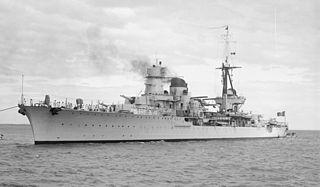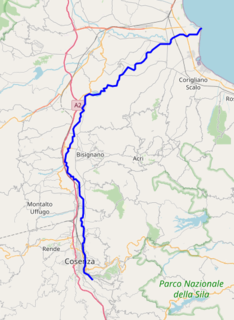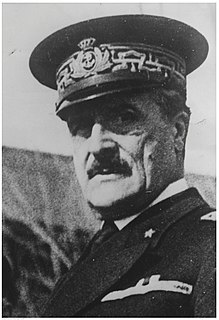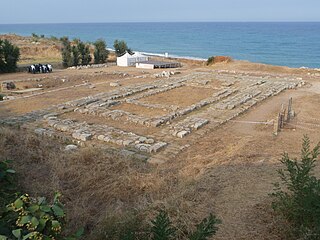Related Research Articles

Gaius Plinius Secundus, called Pliny the Elder, was a Roman author, naturalist and natural philosopher, and naval and army commander of the early Roman Empire, and a friend of the emperor Vespasian. He wrote the encyclopedic Naturalis Historia, which became an editorial model for encyclopedias. He spent most of his spare time studying, writing, and investigating natural and geographic phenomena in the field.

Mount Vesuvius is a somma-stratovolcano located on the Gulf of Naples in Campania, Italy, about 9 km (5.6 mi) east of Naples and a short distance from the shore. It is one of several volcanoes which form the Campanian volcanic arc. Vesuvius consists of a large cone partially encircled by the steep rim of a summit caldera, caused by the collapse of an earlier and originally much higher structure.

Gaius Plinius Caecilius Secundus, born Gaius Caecilius or Gaius Caecilius Cilo, better known as Pliny the Younger, was a lawyer, author, and magistrate of Ancient Rome. Pliny's uncle, Pliny the Elder, helped raise and educate him.
Marcus Terentius Varro was one of ancient Rome's greatest scholars and a prolific author. He is sometimes called Varro Reatinus to distinguish him from his younger contemporary Varro Atacinus.

The Battle of Calabria, known to the Italian Navy as the Battle of Punta Stilo, was a naval battle during the Battle of the Mediterranean in the Second World War. Ships of the Italian Regia Marina were opposed by vessels of the British Royal Navy and Royal Australian Navy. The battle occurred 30 miles to the east of Punta Stilo, Calabria, on 9 July 1940. It was one of the few pitched battles of the Mediterranean campaign during the Second World War involving large numbers of ships on both sides. Both sides claimed victory, but in fact the battle was a draw and everyone returned to their bases safely.

Vasto is a little city by the sea on the opposite side of Rome. The comune is on the Adriatic coast of the Province of Chieti, in southern Abruzzo, Italy. It was also called during the Middle Ages Guastaymonis, Vasto d'Aimone or Waste d'Aimone. Fascist Italy called the city Istonio, but it has been renamed Vasto in 1944.
Gaetuli was the Romanised name of an ancient Berber tribe inhabiting Getulia. The latter district covered the large desert region south of the Atlas Mountains, bordering the Sahara. Other documents place Gaetulia in pre-Roman times along the Mediterranean coasts of what is now Algeria and Tunisia, and north of the Atlas. During the Roman period, according to Pliny the Elder, the Autololes Gaetuli established themselves south of the province of Mauretania Tingitana, in modern-day Morocco. The Godala are believed to be descendants of the Gaetuli.

Alberto da Giussano was an Italian Giussano-class cruiser, which served in the Regia Marina during World War II. She was launched on 27 April 1930.

Armando Diaz was a light cruiser of the Condottieri class and the sister-ship of the Luigi Cadorna. She served in the Regia Marina during World War II. She was built by OTO, La Spezia, and named after Armando Diaz, an Italian Field Marshal of World War I.

Stilo is a town and comune in the province of Reggio Calabria, in the Calabria region of southern Italy. It is 151 kilometres (94 mi) from Reggio.

Raimondo Montecuccoli was a Condottieri-class light cruiser serving with the Italian Regia Marina during World War II. She survived the war and served in the post-war Marina Militare until 1964.

Emanuele Filiberto Duca d'Aosta was an Italian light cruiser of the fourth group of the Condottieri-class, that served in the Regia Marina during World War II. She survived the war, but was ceded as war reparation to the Soviet Navy in 1949. She was finally renamed Kerch and served in the Black Sea Fleet until the 1960s.

Eugenio di Savoia was a Condottieri-class light cruiser, which served in the Regia Marina during World War II. She survived the war but was given as a war reparation to the Hellenic Navy in 1950. She was renamed Elli and served until 1965.

The Crati is a river in Calabria, southern Italy. It is the largest river of Calabria and the third largest river of southern Italy after the Volturno and the Sele. In classical antiquity it was known as the Crathis or Crater.

The Vallata dello Stilaro is a valley in the Province of Reggio Calabria of Southern Italy. It takes its name from river that flow in the area, the Stilaro.

Domenico Cavagnari was an Italian admiral and the Chief of Staff of the Regia Marina from 1934 until 1940.
The Caturiges were a Gallic tribe dwelling in the upper Durance valley, around present-day towns of Chorges and Embrun, during the Iron Age and the Roman period.

Terina was an ancient city of Magna Graecia on the north shore of the Gulf of Saint Euphemia, about 20 km (12 mi) from Lamezia Terme in Calabria. The site of the city was allegedly found in 1922 by the archaeologist Paolo Orsi near the modern village of Sant'Eufemia Vetere, but a systematic archaeological investigation was only started in 1997 and it is only based on coins found there. Coins, inscriptions and other artefacts retrieved from the site can be seen in the Museo Archeologico Lametino in Lamezia Terme. However, the actual collocation of the ancient city is in Nocera Terinese where the original location is situated on top of a hill called Piano di Tirena. This hill is surrounded by two rivers merging, Savuto and Grande, and it perfectly matches the description provided by the Greek historian Strabo in his major work Geographica, which was first published around 20 AD.

Caulonia or Caulon was an ancient city of Magna Graecia on the shore of the Ionian Sea. At some point after the destruction of the city by Rome in 200 BC, the inhabitants moved to a location further inland. There they founded Stilida, which developed into the modern town Stilo.

The Battle of Stelai was a naval battle fought in 880 between the Byzantine and Aghlabid fleets off the southern Italian peninsula. The battle was a major Byzantine victory. Its location is disputed, hence it is also known as the First Battle of Milazzo or the Battle of Punta Stilo in modern literature.
References

- ↑ Stanley, Jean-Daniel (2007). "Kaulonia, southern Italy: Calabrian Arc tectonics inducing Holocene coastline shifts". Méditerranée (108): 5. doi:10.4000/mediterranee.152.
- ↑ Pliny the Elder. "Natural History". 3.10. Retrieved 7 March 2014.
- ↑ Pliny the Elder. "Naturalis Historiae". 3.10. Retrieved 7 March 2014.